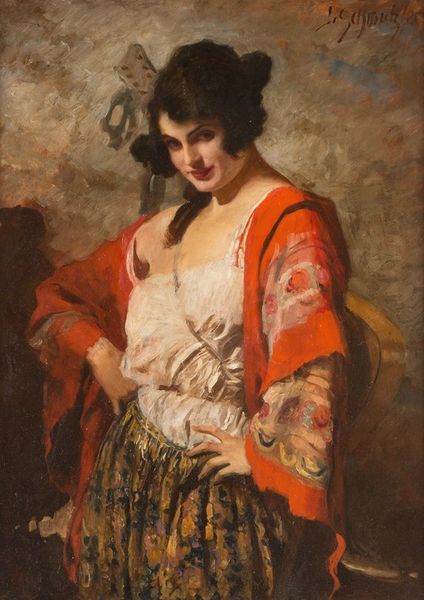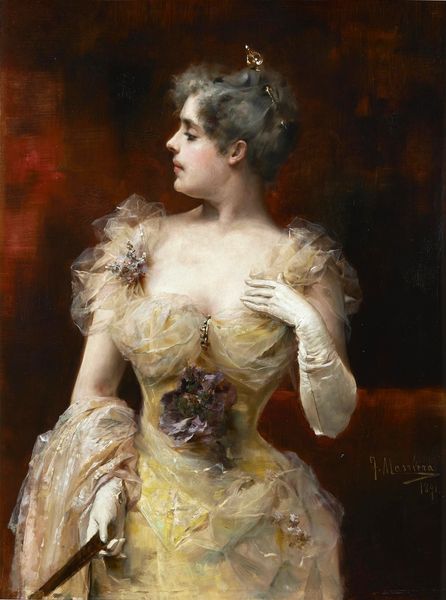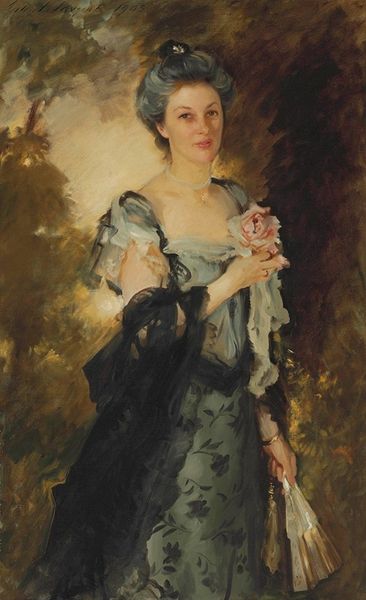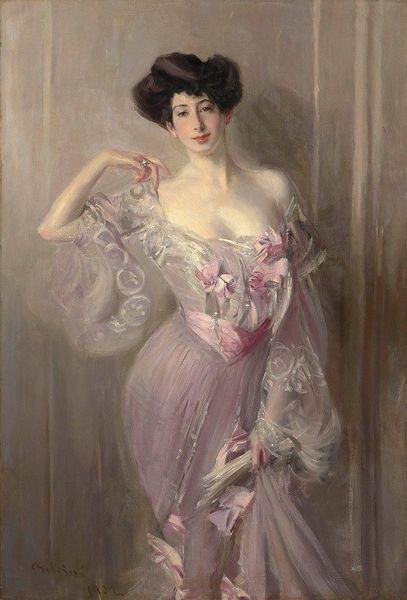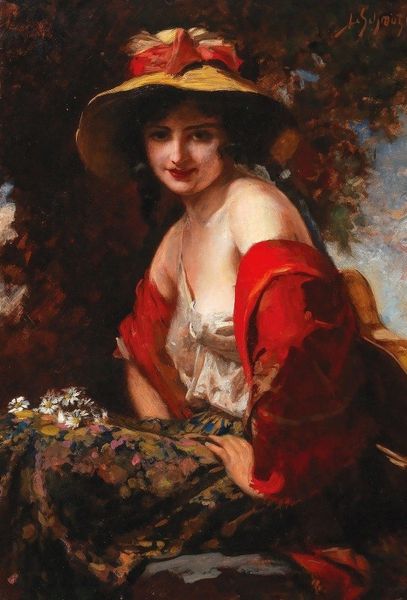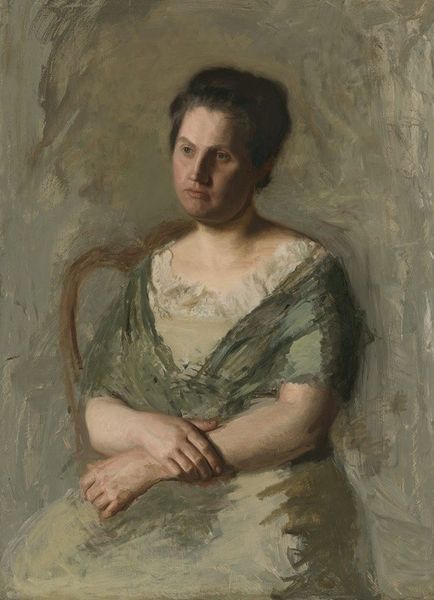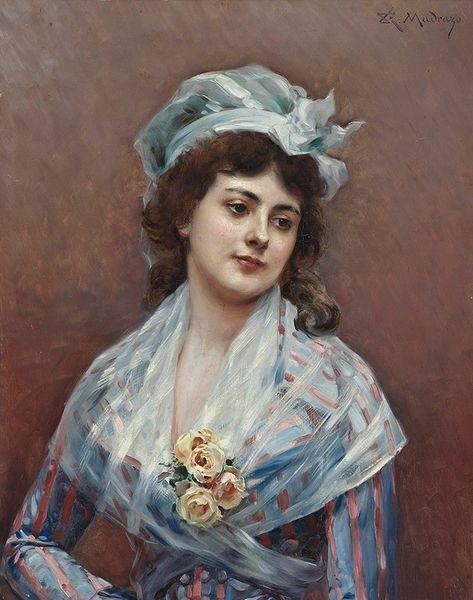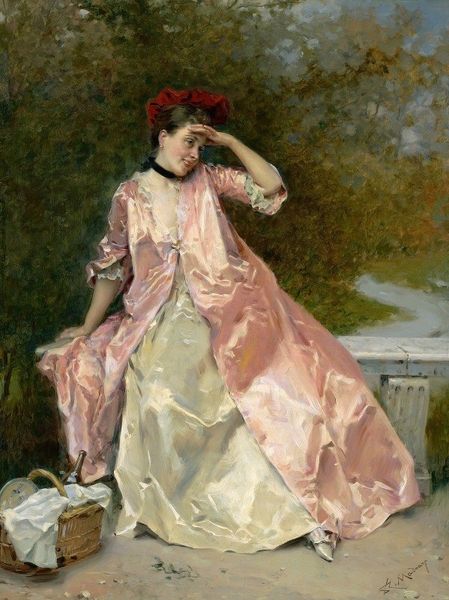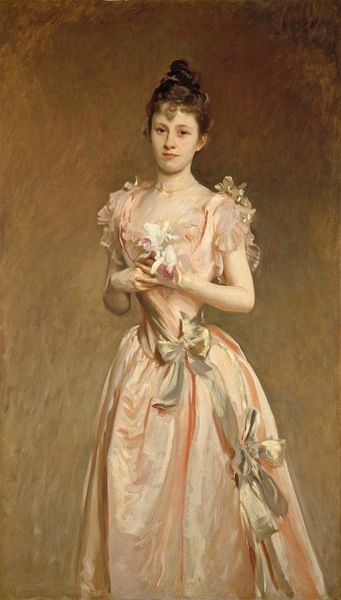
Copyright: Public Domain: Artvee
Curator: Anders Zorn painted "Frieda Schiff" in 1894, capturing a moment in the life of a woman from a prominent Jewish family in Frankfurt. What strikes you first about this oil on canvas? Editor: It's the dress, isn't it? All that fluffy, almost frivolous fabric, rendered with such visible brushstrokes. I can practically feel the texture of the material. Curator: The choice of such a voluminous gown is interesting, especially considering Frieda's social position and the time period. This could be viewed as a performance of femininity. How does the setting work with your perspective on this? Editor: It seems to blur between a studio backdrop and natural light; it suggests a carefully constructed artifice, typical of staged portraiture where the sitter’s labor is hidden. Think of what goes into those fabrics! Who spun that flax into linen? Who dyed it that gentle pink? What were their conditions of employment? It is all erased here. Curator: Absolutely. And consider the way Frieda is situated—gazing calmly at the viewer but also positioned within a framework of social expectation. Is she challenging these gender roles, by facing us directly and owning that stage, or conforming by agreeing to be displayed? How would the viewer, for instance, interpret this depiction of wealth and womanhood? Editor: I'm compelled by Zorn's process. Oil paint allows this kind of texture and this application shows a direct connection to the hand of the artist and the production of this ideal woman. What do you suppose he wished to share with his viewer? Curator: That balance between technical skill and lived reality makes the painting so potent. The artwork reflects Frieda’s positioning at that intersection. Maybe Zorn aimed to convey some of her family’s high social standing. Editor: Seeing it framed like this allows me to explore my initial reading, knowing more of Zorn's skill. He managed to capture an era so well and the impact lingers today. Curator: Indeed, engaging with historical contexts can significantly alter your perception and understanding, letting the materiality speak within those narratives.
Comments
No comments
Be the first to comment and join the conversation on the ultimate creative platform.
